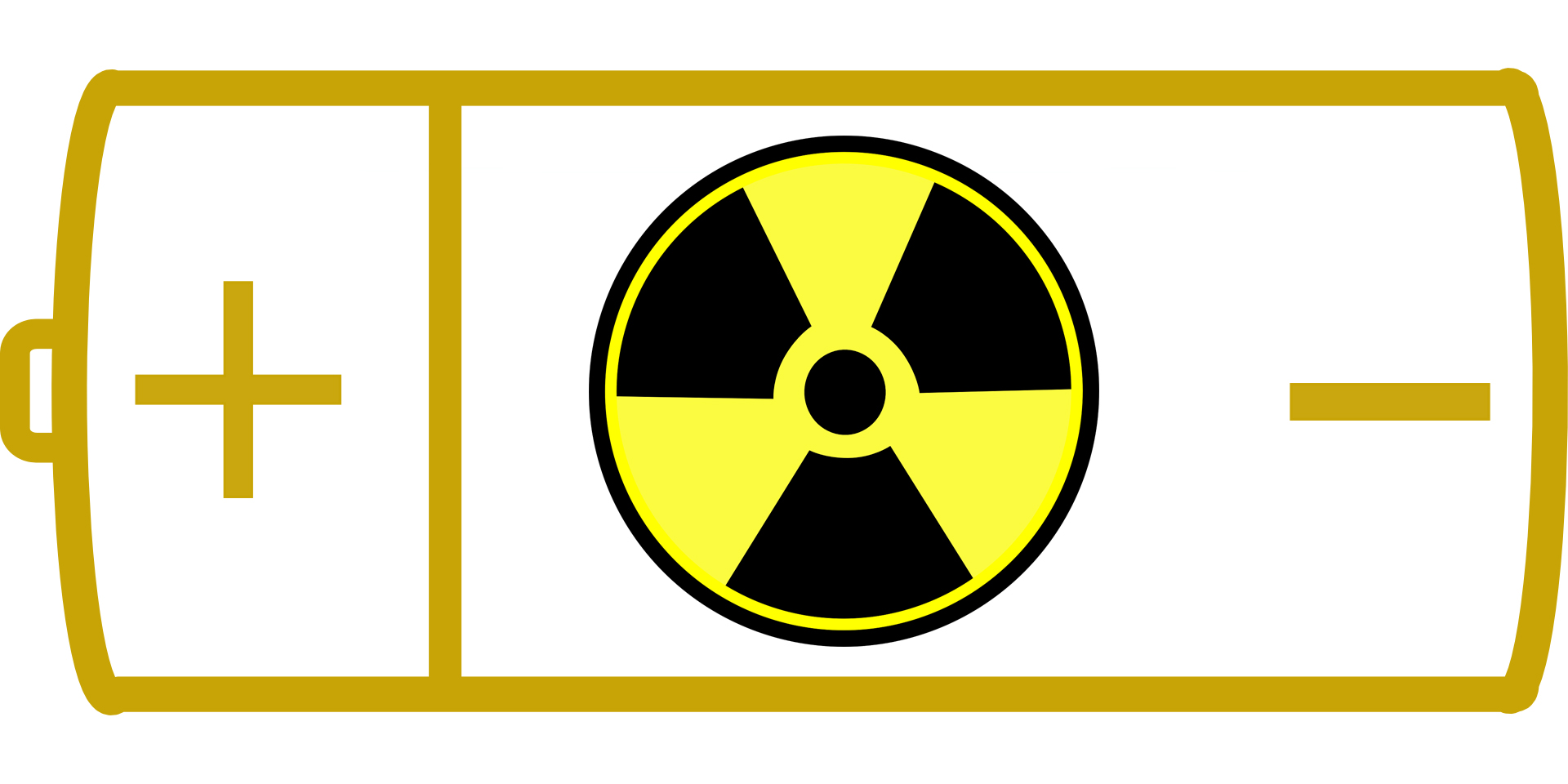 uclear batteries are a revolutionary energy source that could potentially power our world for decades to come. Unlike traditional renewable energy sources, nuclear batteries tap into the natural decay of radioactive material to generate power with almost no environmental impact. With the potential to last up to 28,000 years, these batteries are becoming increasingly attractive for applications where other forms of energy are impractical or unavailable. In this article we will explore the advantages and disadvantages of nuclear batteries, their current and future applications, and the challenges in widespread adoption.
uclear batteries are a revolutionary energy source that could potentially power our world for decades to come. Unlike traditional renewable energy sources, nuclear batteries tap into the natural decay of radioactive material to generate power with almost no environmental impact. With the potential to last up to 28,000 years, these batteries are becoming increasingly attractive for applications where other forms of energy are impractical or unavailable. In this article we will explore the advantages and disadvantages of nuclear batteries, their current and future applications, and the challenges in widespread adoption.
The Basics of Nuclear Batteries
Nuclear batteries are a revolutionary technology that have the potential to revolutionize the energy industry. By utilizing the natural decay of radioactive material, nuclear batteries can generate power for up to 28,000 years – making them an attractive option for applications where renewable energy is impractical or unavailable.
At their core, nuclear batteries use isotopes of elements like plutonium to produce radiation and create electricity. This radiation is contained within thick lead or steel containers, ensuring that it does not pose any danger to the public. Due to their long-term capabilities, these batteries are ideal for powering machines in remote locations where regular battery replacement would be too costly or difficult.
However, there are some drawbacks. Nuclear batteries are relatively expensive compared with other forms of energy production and storage. Additionally, since they produce such a small amount of electricity relative to other sources, they cannot support large scale operations. As such they will likely remain limited to niche applications in the near future.
Despite these drawbacks, nuclear batteries show great promise as a reliable and sustainable form of energy production in certain areas where traditional solutions may not be feasible or practical. In time we may see them become more commonplace as researchers continue developing new ways to make them both cost-effective and safe for public use.
Pros and Cons of Using Nuclear Batteries
Nuclear batteries represent an innovative form of energy production that could revolutionize the way we power remote locations. With the ability to generate power for up to 28,000 years and no emissions, this type of technology is especially attractive for areas with limited access to renewable sources.
However, nuclear batteries come with several drawbacks that must be taken into consideration before investing in them. One of the most obvious disadvantages is their high cost of production—nuclear fuel is scarce and expensive, limiting its widespread use on a large-scale. Additionally, there are safety concerns related to radiation leakage if proper precautions are not taken. Furthermore, due to their size and weight, nuclear batteries can only support small-scale operations and are not easily transportable from one place to another—making them less suitable for certain applications where regular maintenance isn’t feasible or desirable.
Despite these drawbacks, nuclear batteries still have great potential as a reliable power source in challenging environments such as remote locations or space exploration missions. As research in this area continues to advance, more efficient designs may become available—allowing us to make full use of their benefits while avoiding any risks associated with radiation leakage or other safety issues.
How Nuclear Batteries Can Change Technology

Nuclear batteries have the potential to be a game-changer in modern technology. Their small size and long-term power source make them ideal for powering a variety of items, from robots to medical implants. Nuclear batteries utilize natural decay of radioactive material, eliminating hazardous waste generated by traditional sources.
These innovative new energy sources have implications not only in space exploration or remote locations but also in industrial operations such as mobile power sources for heavy machinery. By utilizing nuclear batteries, businesses can save money on costly refueling stops while still providing enough power to run their operations without compromising environmental standards.
The combination of low cost and high efficiency makes nuclear batteries attractive options for companies looking to reduce their carbon footprint but still generate sufficient amounts of energy. Additionally, due to their extended life cycle, these batteries require less frequent replacement than traditional ones – making them even more viable solutions for businesses wanting to maximize efficiency and lower costs simultaneously.
In conclusion, nuclear batteries are powerful yet practical solutions that could revolutionize technology with their long-term reliability and minimal environmental impact. As more efficient designs become available, it is worthwhile for companies to consider this option when seeking ways to remain competitive while meeting sustainability goals.
Current and Future Applications for Nuclear Batteries
Nuclear batteries have the potential to revolutionize energy storage and generation, providing a range of exciting applications across various industries. In terms of robotics, nuclear batteries are already being used to power submarines and other underwater vehicles for exploration and research. Similarly, in the medical field they are being tapped as an energy source for pacemakers due to their long-lasting capabilities.
Space exploration is another area where these batteries could make great strides; they can provide power on missions outside our solar system without frequent recharges or replacement parts. Nuclear batteries could also be utilized on Mars or other distant planets as a sustainable form of energy that won’t run out quickly.
At a more terrestrial level, nuclear battery technology can be applied in places where renewable energy sources are not practical such as deep sea installations or military bases located in remote areas with no access to conventional electricity grids. They can also help provide backup power during emergencies like natural disasters or blackouts which would otherwise leave people stranded without electricity.
The advantages that nuclear batteries offer have made them increasingly attractive worldwide – however further research is still needed before they become widely adopted due to safety issues surrounding radiation leakage production and use. As innovation continues, this promising form of energy production has incredible potential – both now and into the future – which will help us create a more sustainable world with limitless possibilities!
Challenges in Widespread Adoption of Nuclear Batteries
The implementation of nuclear batteries on a larger scale presents several difficulties that must be addressed. First and foremost is the financial cost; these systems can be expensive to produce and maintain, making them difficult for some companies to adopt. Additionally, safety protocols must be established and enforced when dealing with radioactive material in order to prevent radiation leakage during operation or disposal.
In addition, access to this technology is often limited in developing countries, creating another obstacle in its widespread adoption. To bridge this gap between developed nations which have already implemented nuclear batteries systems and those who do not yet have access to them governments must invest in infrastructure projects that provide training programs for these countries. This would help ensure successful installation of the technology worldwide.
Furthermore, questions remain around the reliability of nuclear batteries over long-term usage; research into new designs as well as improved methods for disposing used batteries could make them more viable over extended periods of time. By investing in research and development it is possible for companies to create more efficient designs that reduce costs while still offering high performance capabilities which could lead to an increase in adoption rates.
Overall, while there are challenges associated with the widespread adoption of nuclear batteries these issues can be overcome through investment into research and development as well as infrastructure projects in developing nations. With the right approach it is possible that nuclear batteries could revolutionize many applications where renewable energy sources are impractical or unavailable in the near future.
Avid Writer with invaluable knowledge of Humanity!
Upcoming historian with over 30 million views online.
“You make your own life.”





